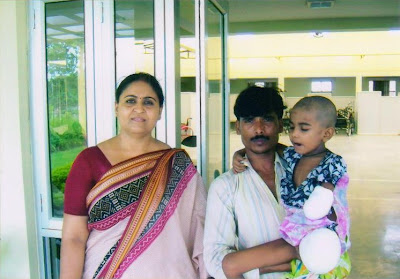
Immunisation (also known as vaccination) of children to provide immunity against various infectious diseases is a standard practice all over the world. Children who develop cancer, can lose the protective effect of these vaccines, mainly as a result of immunosupression from chemotherapy. These children thus need additional doses of various vaccines, which are generally given once treatment is complete. According to UK guidelines, these include additional boosters of diptheria, tetanus, acellular pertussis, injectable polio vaccine, H influenza B, meningococcal C and MMR to be given >6 months after completion of standard chemotherapy (non-myeloablative) for leukaemia and solid cancers
(Ref - RCPCH Guidelines, 2002). In addition repeat BCG vaccination is recommended for those at high risk for tuberculosis and who have a negative tuberculin test after treatment.
Two interesting papers have come out in Pediatric Blood Cancer recently, in relation to this topic. The first is a survey of immunisation practices among paediatric oncology and shared care oncology consultants in UK which shows a high level of compliance with the above mentioned RCPCH guidelines
(Ref - Bate et al, Pediatric Blood Cancer, July 2010). The exception to this was use of pneumococcal conjugate vaccine (which is not specified in the RCPCH guidelines) and 58% of respondents routinely administered it.
Similar guidelines are available in other European countries and North America, but none exist in resource-poor countries (and as far as I am aware there are no guidelines in India). To address this deficiency, a recent review from authors in Pakistan has given recommendations for immunisation against infectious diseases prevalent in resource-poor countries
(Ref - Naqvi et al, Pediatric Blood Cancer, Jan 2010). In addition to the recommendations by RCPCH, these authors also recommend boosters for hepatitis A, hepatitis B, typhoid and varicella.
To extend the above discussion in the Indian context, it would be useful to know the practice by health professionals in India who manage children with cancer. For this purpose, I invite readers of this blog to comment on their personal practice - do they give vaccination boosters after completion of treatment to children with cancer; what boosters are the children given; how long after completion of the treatment are these boosters given; and any other comments.

 The other presentation I really enjoyed was by Dr Vinay Jain on Building capacity in pediatric oncology in India: efforts of Jiv Daya Foundation 2008-2010 which gave a summary of the excellent work that he and his foundation have done over the last few years in several centres in India. More details of their work can be found on www.jivdayafound.org.
The other presentation I really enjoyed was by Dr Vinay Jain on Building capacity in pediatric oncology in India: efforts of Jiv Daya Foundation 2008-2010 which gave a summary of the excellent work that he and his foundation have done over the last few years in several centres in India. More details of their work can be found on www.jivdayafound.org.





















